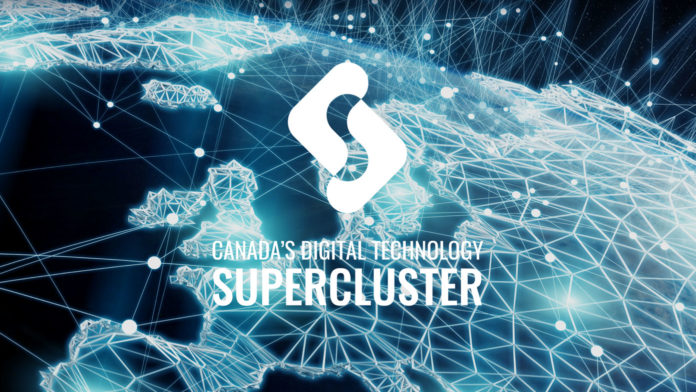We are currently witnessing explosive growth in data creation. More data have been collected in the past two years than had previously been recorded in all of human history. And this is only going to grow as smart devices become even more integrated into our everyday experiences.
But despite this wealth of information, less than 0.5% of data are ever analyzed.
To help Canada solidify an international leadership position in analyzing and visualizing data, the Digital Technology Supercluster was chosen as one of five innovation hotbeds to share a $950-million federal investment as part of the Innovation Superclusters Initiative. This funding will be matched dollar for dollar by the private sector.
In all, the initiative is expected to create more than 50,000 middle-class jobs and grow Canada’s economy by $50 billion over the next 10 years.
Boasting over 200 private sector participants and 25 of British Columbia’s post-secondary institutions, leading universities and research institutes, the Digital Technology Supercluster consortium is rooted in British Columbia’s thriving tech industry, and includes partners from across the country.
Commercial partners include over a dozen large corporate adopters including LifeLabs, Providence Healthcare, Shoppers Drug Mart, Teck Resources, Canfor, Avcorp, TimberWest, Microsoft, Urthecast, and TELUS, in addition to many startups and small and medium enterprises (SMEs).
The team has expertise that spans across quantum computing, machine learning, the Internet of Things (network of smart devices that collect and share data) and augmented and virtual reality, and is poised to make an impact in data visualization.
According to Bill Tam, co-chair of the Digital Technology Supercluster, what set this consortium apart from the competition was their ability to cut across many leading industries, from natural resources, to aviation, to health.
“We created an infrastructure, a collaboration, that has a whole set of capabilities, from data collection to the analysis,” said Tam in his acceptance speech. “The key is actually being able to visualize the data. We are visual beings. So adding that layer, virtual and augmented reality, to the mix, we will solve some of the world’s greatest sustainability and technological issues and position Canada as a leader in all respects.”
Although the funding announcement just came through last month, the Digital Technology Supercluster has already been working together for the better part of a year.
“Collaboration is fostered through the program and project design,” says Tam. “It is geared to solving industry problems by facilitating joint development projects between industry players and also with postsecondary and research partners. We’ve seen many new opportunities arise through the eight months that we’ve been working on this project.”
To start, there are three main projects that the team plans to tackle. One of them is the Secure Health and Genomics Platform, a project that aims to create the secure infrastructure needed to gather patient data to enable personalized cancer treatment based on each patient’s genes.
At the same time, the Earth Data Store will record a digital copy of 85% of the world’s land every day, providing a single source of geographic data for the resource sector. Through data analytics and visualization, researchers will be able to probe this rich resource for insights on our planet, including enhanced assessments for resource sector project planning.
Lastly, the Digital Learning Factory takes on challenges in manufacturing. Described as a ‘teaching hospital for advanced manufacturing’ this virtual space, driven by real factory data, will help companies find ways to be more efficient through rapid experimentation in the cloud. Virtual simulations will help operators understand, control, and optimize production, starting with manufacturing advanced aerospace composites.
“We believe the Digital Technology Supercluster offers a unique collaboration platform for companies and postsecondary partners to engage in bold and ambitious projects that they would not have pursued independently,” says Tam. “We see that the Supercluster will catalyze new products and new platform technologies that can assert Canada’s leadership in the digital economy.”








































